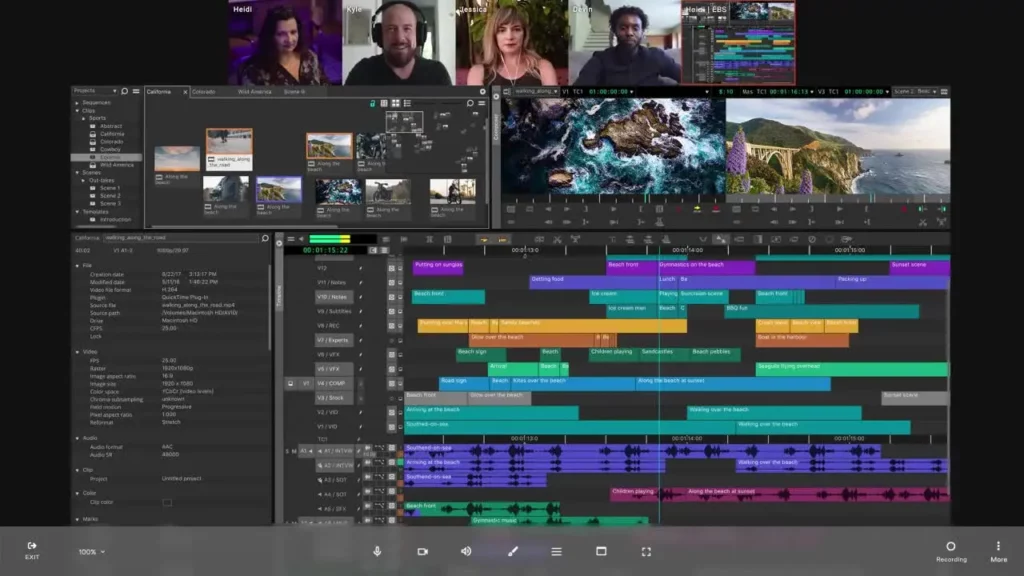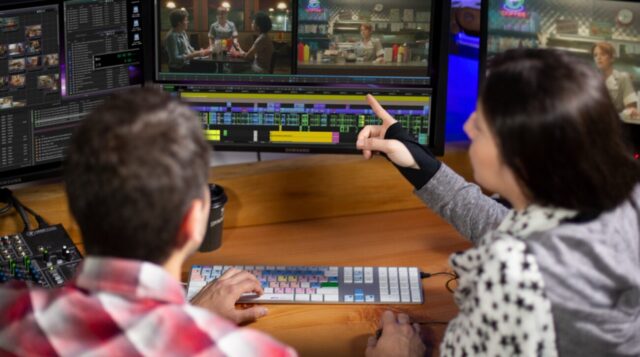
The art of storytelling is no longer confined to the written word or static images. Today’s narratives often unfold across dynamic, visual mediums, particularly videos. As content creators and businesses increasingly turn to video to convey their messages, the importance of efficient and effective collaboration in video production has skyrocketed. Read on to learn about the role of video review software in enhancing creative collaboration, offering insights into how it is reshaping the way teams work together in various industries.
The Rise of Video in Diverse Domains

Video content has seen an unprecedented rise in popularity across various sectors. In travel, videos bring destinations to life, offering immersive experiences that go beyond photographs. Businesses use video for marketing, training, and even internal communication, recognizing its power to engage and inform. The lifestyle sector thrives on video content, from fashion runways to fitness tutorials, while authors and publishers are increasingly leveraging book trailers and author interviews to captivate the literary community.
This surge in video usage creates a unique set of challenges, primarily in the realm of collaboration. Video production, unlike writing or photography, often requires a team comprising directors, editors, cinematographers, and more. Each member contributes to the final product, but coordinating their efforts can be a daunting task. This is where video review software becomes a game-changer.
Transforming Team Dynamics With Video Review Software
The advent of video review software has revolutionized the way teams collaborate on video projects. Imagine a platform where directors, editors, and other stakeholders can simultaneously view, comment on, and suggest edits to a video. This technology eliminates the need for lengthy in-person meetings or cumbersome email threads. Instead, it offers a centralized, interactive space where feedback is immediate, clear, and actionable.
Incorporating this software into the video production process can significantly streamline workflows. Team members can pinpoint exact moments in the video to leave their feedback, making it easier for editors to understand and implement changes. This precision not only saves time but also reduces the potential for misunderstandings, ensuring that everyone’s vision is aligned.
Exploring the Capabilities of Video Review and Collaboration Software

Venturing into the heart of our discussion, video review and collaboration software stands as a beacon of innovation in the realm of digital storytelling. This technology is not just a tool; it’s a virtual workspace that bridges geographical and communicative gaps, ensuring that every voice in the creative team is heard and valued.
At its core, this software offers a platform for real-time feedback. Team members can view and evaluate the latest version of a video, pinpoint specific frames, and leave comments or suggestions. These annotations are visible to all, fostering a transparent and collaborative environment. What makes this feature stand out is its attention to detail – comments can be tied to precise moments in the video, ensuring that feedback is contextual and relevant.
Additionally, most video review and collaboration software includes version control capabilities. This means that every edit, every version of the video, is stored and accessible. Teams can easily track changes, compare different versions, and revert to previous iterations if needed. This historical record is invaluable, not just for maintaining the integrity of the project but also for learning and improving future endeavors.
Bridging the Gap Between Creativity and Technology
In a world where technology and creativity are increasingly intertwined, video review and collaboration software stands as a testament to this synergy. It’s not just about making processes faster or more efficient; it’s about enhancing the creative potential of teams.
One of the key benefits of this technology is its ability to democratize the creative process. Certain voices might dominate in traditional video production settings, while others are overlooked. However, with a platform that allows equal participation from all team members, there’s a richer tapestry of ideas and perspectives. This diversity is crucial in creative endeavors, leading to more innovative and engaging content.
The Future of Video Production and Collaboration

As we look toward the future, it’s clear that video review and collaboration software will play an increasingly vital role in video production. This technology is not just a passing trend but a fundamental shift in how creative teams interact, ideate, and create.
In the coming years, we can expect to see further advancements in this field. Artificial intelligence and machine learning could be integrated to provide even more sophisticated tools for editing and feedback. Imagine software that can suggest edits based on the team’s preferences or even predict potential issues before they arise. The possibilities are exciting and endless.
Integrating Video Review Software in Various Industries
While the impact of video review and collaboration software is most evident in film and media production, its influence extends to various other industries. In travel, for instance, this software can help create captivating promotional videos by enabling teams to collaborate across continents. Marketing agencies benefit immensely by crafting compelling campaigns with team members and clients providing real-time feedback. Even in education, where teachers and students are increasingly relying on video content, this software streamlines the creation and review process, making learning more interactive and engaging.
Overcoming Challenges and Limitations

Despite its numerous advantages, integrating video review and collaboration software into existing workflows can present challenges. Resistance to change is a common hurdle, especially in teams accustomed to traditional collaboration methods. Learning curves are also associated with any new technology, which can initially slow down processes.
Plus, while this software significantly improves efficiency and collaboration, it’s not a magic solution for all production challenges. It requires a stable internet connection, which can be a limitation in remote locations. Additionally, the software’s effectiveness is contingent on the willingness of team members to actively engage and provide constructive feedback.
The Ethical Considerations of Digital Collaboration
As we embrace the benefits of video review and collaboration software, it’s also crucial to consider the ethical implications. Digital collaboration brings up questions of data privacy and security, especially when dealing with sensitive or proprietary content. Ensuring that the software adheres to stringent security protocols is paramount.
Additionally, there’s the aspect of maintaining a healthy work-life balance. The convenience of digital collaboration can blur the lines between work and personal time, leading to burnout. Teams need to establish clear guidelines and boundaries to ensure that the flexibility and accessibility of digital tools don’t encroach on personal time and well-being.
Video review and collaboration software is not just changing the way we create videos; it’s transforming the way we collaborate, innovate, and tell stories. For businesses, educators, marketers, and creators, it represents a new era of possibilities, one where technology and creativity come together to create something truly remarkable.







